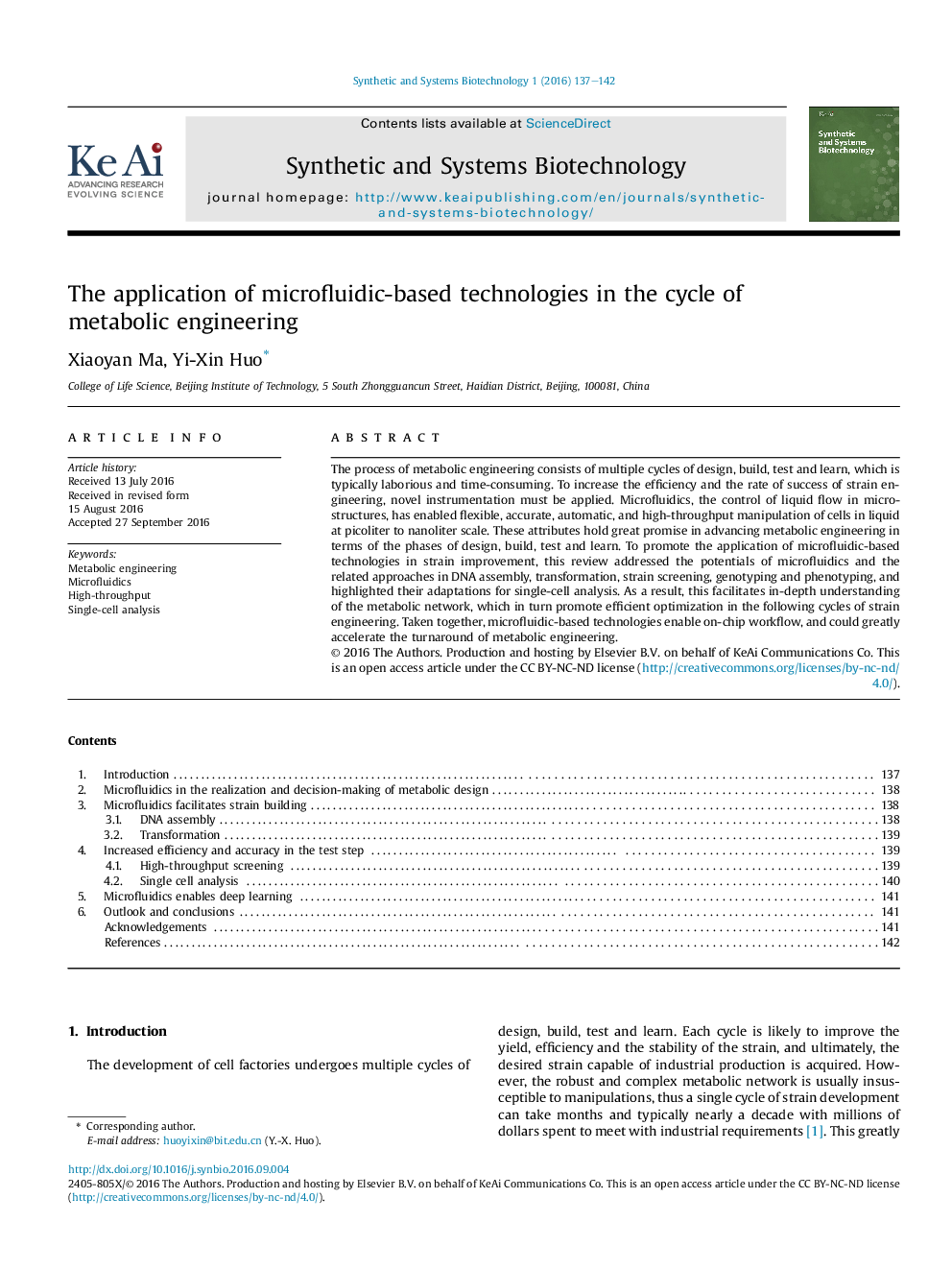| Article ID | Journal | Published Year | Pages | File Type |
|---|---|---|---|---|
| 5522877 | Synthetic and Systems Biotechnology | 2016 | 6 Pages |
The process of metabolic engineering consists of multiple cycles of design, build, test and learn, which is typically laborious and time-consuming. To increase the efficiency and the rate of success of strain engineering, novel instrumentation must be applied. Microfluidics, the control of liquid flow in microstructures, has enabled flexible, accurate, automatic, and high-throughput manipulation of cells in liquid at picoliter to nanoliter scale. These attributes hold great promise in advancing metabolic engineering in terms of the phases of design, build, test and learn. To promote the application of microfluidic-based technologies in strain improvement, this review addressed the potentials of microfluidics and the related approaches in DNA assembly, transformation, strain screening, genotyping and phenotyping, and highlighted their adaptations for single-cell analysis. As a result, this facilitates in-depth understanding of the metabolic network, which in turn promote efficient optimization in the following cycles of strain engineering. Taken together, microfluidic-based technologies enable on-chip workflow, and could greatly accelerate the turnaround of metabolic engineering.
